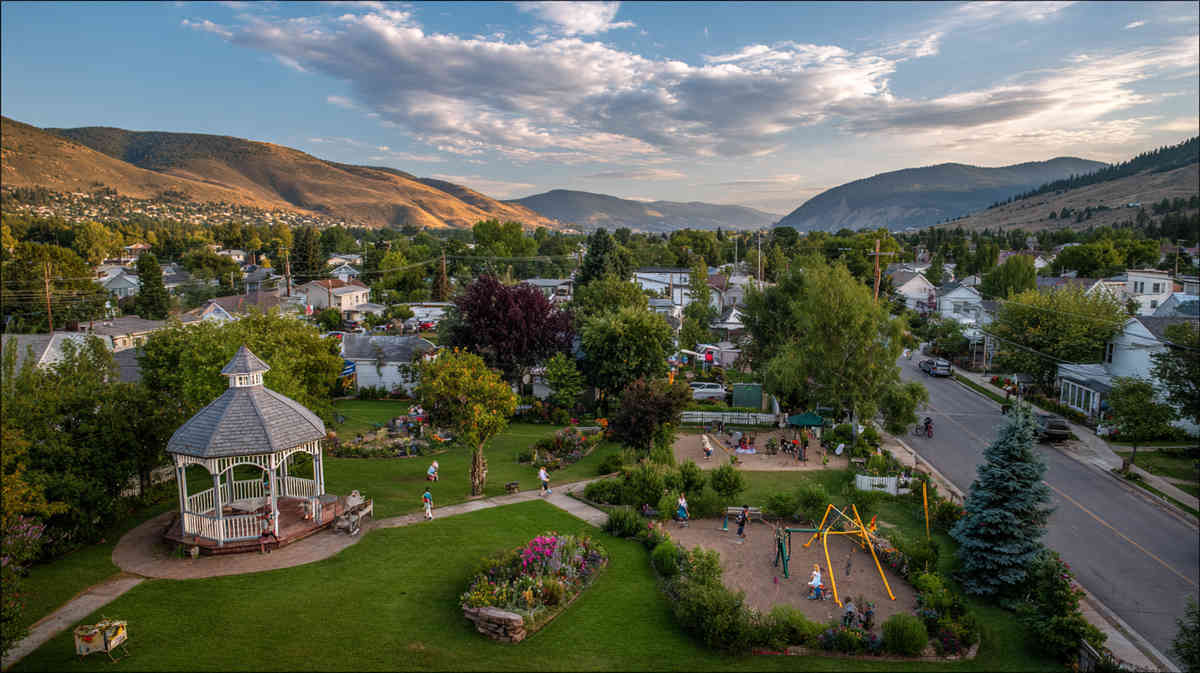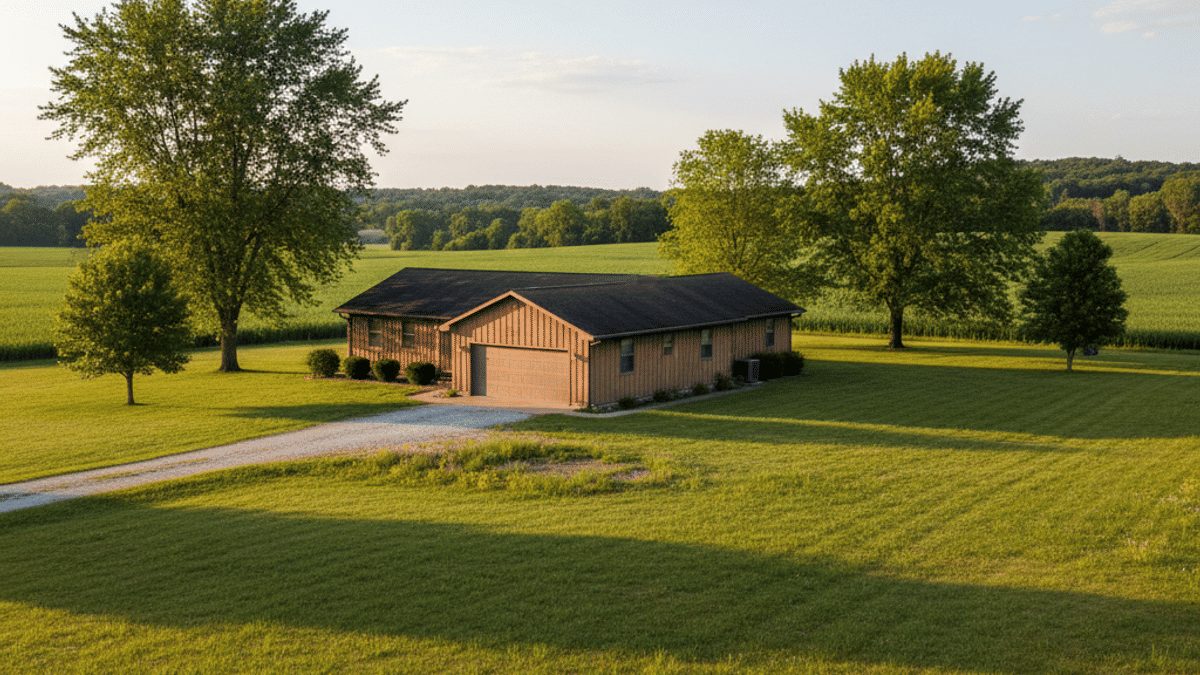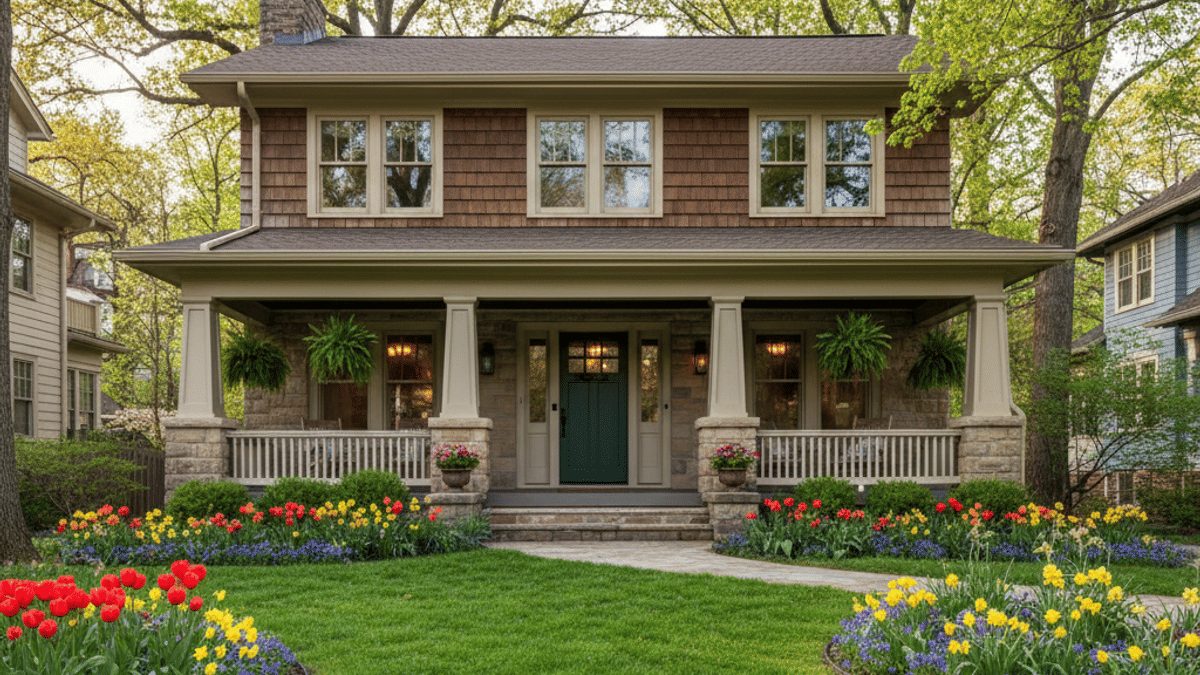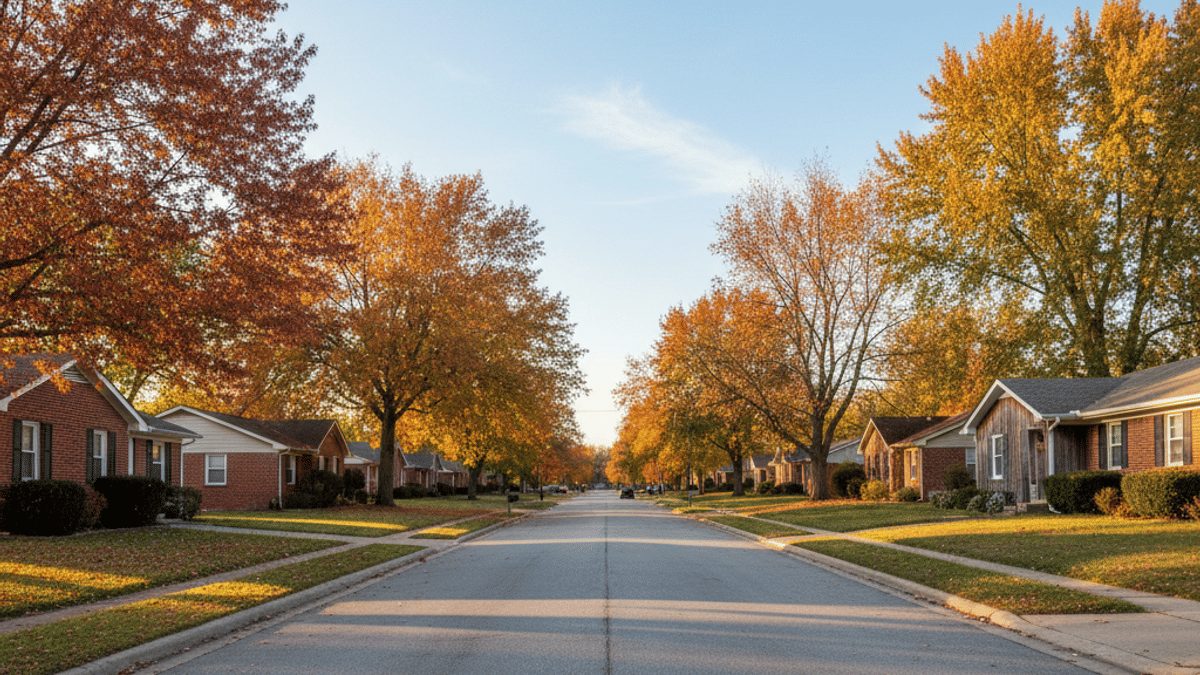Quick Snapshot of Ashland, Missouri
Ashland sits almost perfectly halfway between Columbia and Jefferson City. Depending on traffic, you can slide into either city in fifteen to twenty minutes, which is a huge perk for commuters. The latest census estimate puts the headcount right around 4,400, and city hall expects that number to crack 5,000 before the end of 2025. New rooftops keep springing up, and the median single-family price has climbed into the upper-$290s after hovering near $250K only two years ago. Days-on-market now average twelve. Translation: buyers are circling, and listings move fast. Even so, outbound migration remains low. Most folks who arrive stick around because the cost of living undercuts the bigger college town to the north.
The Upside: Why People Keep Picking Ashland
You want the good stuff first, so let’s dive in.
- Location sweet spot
Columbia throws off big-city energy with the University of Missouri, health-tech startups, and SEC football. Jefferson City offers state-government stability plus steady manufacturing gigs. Ashland takes advantage of both labor markets without paying either city’s price tag. Many residents work north or south during the day, then decompress on quiet streets at night. - Unforced community vibe
The phrase “southern Boone County hospitality” gets tossed around for a reason. Friday fish fries at the Optimist building. Summer concerts under the gazebo at the city park. Neighbors wave, and they mean it. If you sign up for a local 5K, assume somebody will cheer you on by name before you hit mile one. - Schools that punch above their weight class
Southern Boone County R-1 sends its high-schoolers to conference championships in track and baseball almost every year. Test scores land in the state’s top quartile. Parents rave about the district’s early-childhood center that just opened a sensory garden funded by a backyard chicken raffle. True story. - Easy nature fixes
The Katy Trail rolls five minutes west for gravel biking along the Missouri River bluffs. Eagle watching is best in January, yet you will spot raptors most mornings perched on utility poles along Route Y. Mark Twain National Forest is within an hour if you need deeper woods. Closer to home, the city is finalizing plans to connect neighborhood greenways to the 300-acre Hartsburg Floodplain conservation area. - Lower daily costs
Utility bills lean kind. Water, sewer, and trash currently bundle under eighty bucks a month for the average household. Fiber optic internet from Socket now reaches every subdivision built after 2019, and older blocks are scheduled to light up by Thanksgiving. Groceries cost roughly three percent below the national average thanks to a new discount market that opened last fall. - Safety nets you do not notice until you need them
Boone County Fire Station 9 sits on Main Street with a six-minute citywide response time. University Hospital’s Level I trauma center stands fifteen miles north, reachable in under fifteen minutes if Life Flight is required. Ashland Police Department quadrupled its sworn officers since 2020, and the force now fields an around-the-clock patrol unit. - Room to grow your own thing
Cain-creek-bottom soil is black and forgiving. Many yards pull seventy-foot tomatoes by July. Chickens are legal with a simple $10 permit. Garden-to-table has never been trendier, and here it simply makes sense. - Bonus tidbits locals brag about
– A weekly farmers market where you can buy sourdough that sells out in thirty minutes.
– A coffee shop that roasts Ethiopian beans on site every Thursday.
– A fiber arts collective teaching kids how to weave with prairie grasses.
That gives you a taste of Ashland’s upside. Keep reading though. No place gets a free pass.
The Downside: Stuff That Might Bug You
Every hometown has quirks and shortcomings. Ashland is no different, so let’s rip off the band-aid.
- Housing pinch
Supply sits tight. The city issued fewer than forty single-family permits in the last calendar year because builders can barely keep up with infrastructure hookups. Smaller ranch homes under 1,400 square feet that once sold in the low $200s now flirt with $260K or more, and buyers occasionally agree to waive inspections to win the bid. If you are dreaming of a big backyard and instant equity, timing matters. - Car culture, like it or not
No city buses. No light rail. Two rideshare cars prowl the streets on weekend nights, and they both log off by midnight. Your own wheels are mandatory. Gas prices in Boone County hover a nickel above the Midwest average, and Highway 63 bottlenecks when a tractor trailer flips during harvest. Expect a few white-knuckle commutes each year. - Limited nightlife
The local tavern closes at eleven on weeknights, and the grill stops serving food an hour earlier. You will not find rooftop bars or niche food trucks parked on Main Street. To catch a national touring band, you will drive to Columbia’s Blue Note or St. Louis the next day. Some newcomers confess that the quiet surprises them more than they expected. - Shopping gaps
Target run? Forty minutes round-trip. Same deal for chain bookstores, indoor malls, or big-box pet stores. One boutique groomer does make house calls, but you will pay a premium. Big Prime packages still arrive in two days, yet certain oversize items spend extra time in regional warehouses. Plan ahead if you are furnishing an entire home from scratch. - Seasonal weather mood swings
High humidity kisses 95 degrees in late July. Winters stay milder than northern Missouri, though a wet snowstorm will still ice bridges and shut the kids in for a day or two. Tornado watches pop up every spring. If you prefer consistent San Diego weather, this part of the map demands compromise. - Property taxes trending north
Boone County reassessed valuations in 2024, and average homeowners saw taxable value climb eight percent. The county commission insists rates may adjust downward, yet only time will tell. Line items for schools and public safety eat up the biggest chunks. If you run the numbers, make sure your mortgage escrow has wiggle room. - Growing pains nobody prepared for
Fiber lines are great, but whole streets can look like trench warfare while crews finish digging. A grocery chain bought land on the north side that will require widening Route M. Expect orange cones and detours. Starter homes now share cul-de-sacs with half-million-dollar customs, which occasionally sparks debate over street maintenance fees and HOA rules. Transition can feel bumpy while leadership figures out the next chapter. - Quiet sometimes equals boredom
Ask a teen here, and you may get an eye roll. They want arcades, skate parks, or something open past dark. Parents often drive to Columbia for Saturday fun. If you crave constant go-go-go energy, Ashland might leave you fidgeting.
Now you know what residents whisper about at the bleachers. None of these deal-breakers may scare you off, but they are real factors to weigh before signing on the dotted line.
So, Should You Pack the Moving Truck?
Ashland serves up a curious mix of small-town simplicity and strategic positioning. Within twenty minutes, you tap into two larger job markets. You still hang your hat in a place where the barista remembers your name and the school superintendent might wave from the sidelines. Homes cost less than in Columbia, yet inventory moves lightning fast and tax bills keep nudging higher. Daily life demands a reliable car, solid weather apps, and realistic expectations about nightlife. Balance the good with the rough edges, and you will know whether Ashland matches your next life chapter.
FAQs About Moving to Ashland
What is the typical price tag on a three-bed, two-bath home?
Recent closings hover between $285K and $320K, depending on age and finish level. New construction with quartz counters and a split floor plan can cross $340K without blinking.
How healthy is the local job scene?
Inside city limits, employment leans toward education, light manufacturing, and service roles. The real power plays out along Highway 63. Columbia’s tech corridor, Jefferson City’s state-government agencies, and three regional hospitals fuel paychecks for a large slice of Ashland commuters.
Are the schools really that strong?
Southern Boone County R-1 posts math and reading scores about ten percent above the Missouri state average. Class sizes stay under twenty-three students through eighth grade. The district just approved a bond to expand the performing arts center, which will free up space for digital media labs.
How far is the nearest full-service hospital?
University Hospital in Columbia sits fifteen miles north. Boone Health and Capital Region Medical Center fill out the network, giving residents three major facilities within a thirty-minute radius. Primary care clinics also operate inside Ashland for routine appointments.
What do folks do on weekends around here?
Think farmers market mornings, Katy Trail bike rides, and tailgating at Mizzou games. In summer, families float the Missouri River from Huntsdale to Hartsburg. When cabin fever hits, Columbia’s arts district and its monthly street fest pull crowds from every nearby zip code.
How brutal is the commute during winter?
Snow totals average fifteen inches a season. Highway 63 crews pre-treat early, yet black ice still sneaks in before sunrise. All-weather tires plus an extra mug of coffee usually handle it. The bigger headache comes from fog settling in the river valley on spring mornings.
Is the overall cost of living still lower than in Columbia?
Numbers from the Council for Community and Economic Research peg Ashland roughly seven percent cheaper. Housing carries the largest gap. Groceries and utilities run close to even. Factor in higher fuel usage if you commute daily, and the savings narrow but remain noticeable.
You now hold the real scoop, unfiltered and grounded in everyday experience. Use it to decide whether a Boone County address with quick highway access and a slower pace feels right for you.







